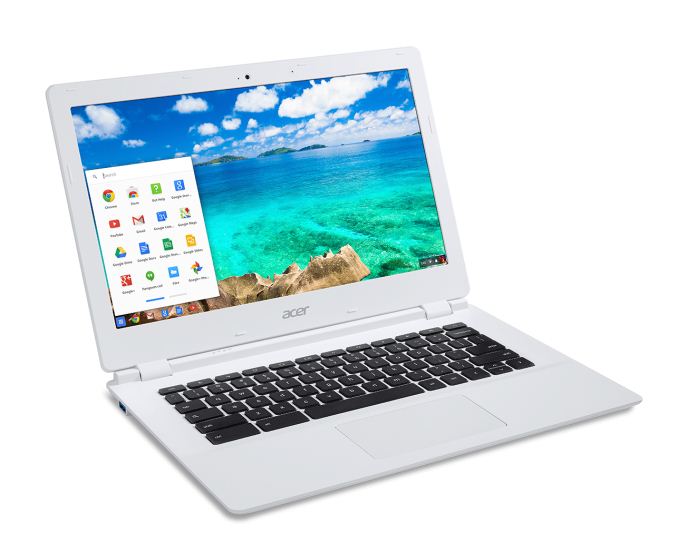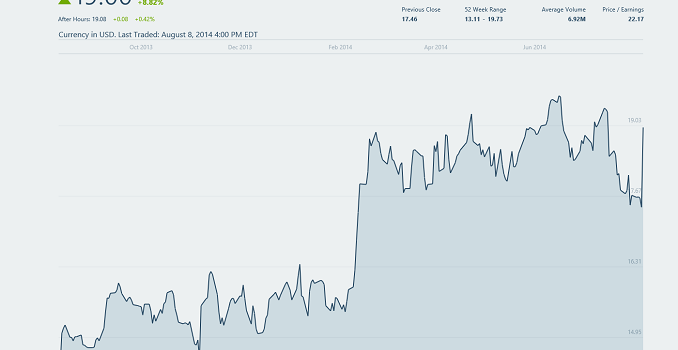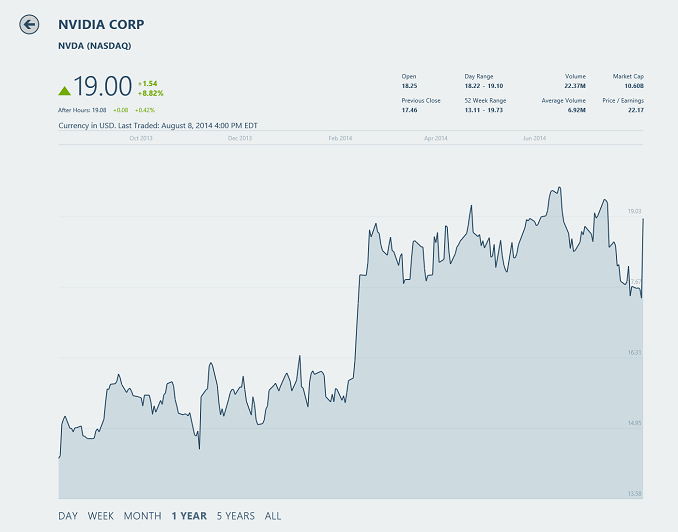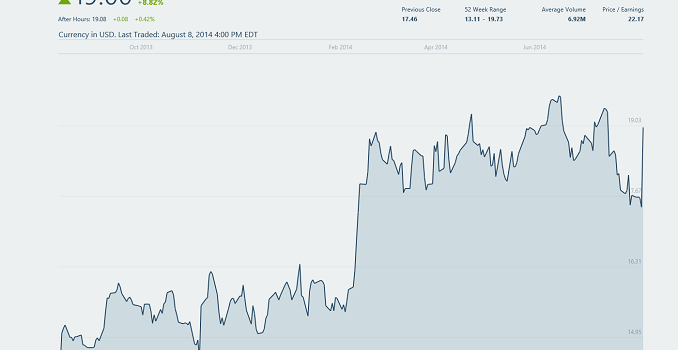Tegra K1 Lands in Acer’s Newest Chromebook
Today Acer announced four new models of a new 13.3″ Chromebook design featuring Tegra K1. This is a significant launch for NVIDIA, proving there’s industry interest in Tegra K1 after the disappointing interest in Tegra 4 and notching NVIDIA their first Chromebook design win.
NVIDIA has two versions of the Tegra K1, one implementing a 4+1 configuration of ARM Cortex A15s, and another implementing two custom designed NVIDIA Denver CPUs. Acer’s new Chomebooks feature the former, so we have yet to see Denver CPUs in the wild. Samsung previously shipped a Chromebook featuring Cortex A15s via its Exynos processor and HP used the same SoC in their Chromebook 11. Samsung has since refreshed their ARM Chromebooks a few times, with new models using the “Chromebook 2” branding.
The most significant portion of the Tegra K1 SoC is its 192 CUDA cores. Chromebook relies heavily on web based applications, but with the rise of WebGL there have been some experiments with browser based 3D games. There haven’t been any AAA title WebGL games yet, but when they arrive, this Chromebook should be well equipped to handle them; NVIDIA specifically mentions the upcoming Miss Take and Oort Online, as well as WebGL ports of Unreal Engine 4 and Unity 5.
NVIDIA claims up to 3X the WebGL performance of competing Chromebooks, with processor performance superior to the Exynos 5800 and Bay Trail Celeron N2830. Unfortunately, no performance comparisons between K1 and the Haswell Celeron 2955U were provided. Since both Haswell and Tegra K1 are available for the Chromebook platform, we’ll also have the opportunity to perform CPU and GPU benchmarking to directly compare the processors. We have requested a review sample when Acer makes them available.
Beyond the marquee feature of the Tegra K1 processor, the Acer Chromebook also includes 2×2 MIMO wireless AC, an anti-glare coating, and two models feature a 1080p display. Specifications provided by Acer are listed below; Acer provided the model numbers for the three available for presale, and there is a fourth configuration available through resellers where we do not yet have the model number. Acer states they will begin shipping the first week of September.
| Acer Chromebook 13 Models | |||||||||||
| Model | CB5-311-T7NN | CB5-311-T9B0 | ? | CB5-311-T1UU | |||||||
| SoC | NVIDIA Tegra K1 (2.1GHz) | NVIDIA Tegra K1 (2.1GHz) | NVIDIA Tegra K1 (2.1GHz) | NVIDIA Tegra K1 (2.1GHz) | |||||||
| Memory | 2GB | 2GB | 4GB | 4GB | |||||||
| Storage | 16GB SSD | 16GB SSD | 16GB SSD | 32GB SSD | |||||||
| Display |
1366×768 Anti Glare |
1920×1080 Anti Glare |
1366×768 Anti Glare |
1920×1080 Anti Glare |
|||||||
| Manufacturer Estimated Battery Life | 13 hours | 11 Hours | 13 hours | 11 Hours | |||||||
| Battery Size | 4-cell 3220mAh 48Wh | 4-cell 3220mAh 48Wh | 4-cell 3220mAh 48Wh | 4-cell 3220mAh 48Wh | |||||||
| Networking |
802.11ac 2×2 MIMO |
802.11ac 2×2 MIMO |
802.11ac 2×2 MIMO |
802.11ac 2×2 MIMO |
|||||||
| Ports |
2x USB 3.0 HDMI 3.5mm Audio |
2x USB 3.0 HDMI 3.5mm Audio |
2x USB 3.0 HDMI 3.5mm Audio |
2x USB 3.0 HDMI 3.5mm Audio |
|||||||
| Extras |
720p Webcam Stero Speakers Microphone |
720p Webcam Stero Speakers Microphone |
720p Webcam Stero Speakers Microphone |
720p Webcam Stero Speakers Microphone |
|||||||
| Thickness | 0.71 in | 0.71 in | 0.71 in | 0.71 in | |||||||
| Weight | 3.31 lbs | 3.31 lbs | 3.31 lbs | 3.31 lbs | |||||||
| Price | $279.99 | $299.99 | $329.99 | $379.99 | |||||||
Source: Acer
The higher resolution displays drop battery life a couple hours, which isn’t too surprising, but overall battery life of 11-13 hours is still great for a Chromebook. The industrial design of the new Acer Chromebooks is also much better than on the previous models, with clean lines and a white body. The Acer Chromebook is also fanless, thanks to reduced power requirements for NVIDIA’s Tegra K1 SoC.
Overall pricing looks good, with the base model matching the price of HP’s current Chromebook 11 and the 1080p upgrade taking on the HP Chromebook 14. But the real competition is still going to be with Acer’s existing Chromebook C720, which can be found with 32GB storage and 2GB RAM and a Celeron 2955U for just $229. There’s also the question of size; the C720 was an 11.6″ Chromebook, and while some might prefer a smaller device the 13.3″ will likely be preferred by others. Samsung’s Chromebook 2 13.3, which has a 1080p display and 16GB of storage and 4GB of ram, likely needs a price drop to compete as it is listed for $399. Either way, with ChromeOS continuing to improve over time, Windows laptops continue to face increasing competition from alternative laptops.














